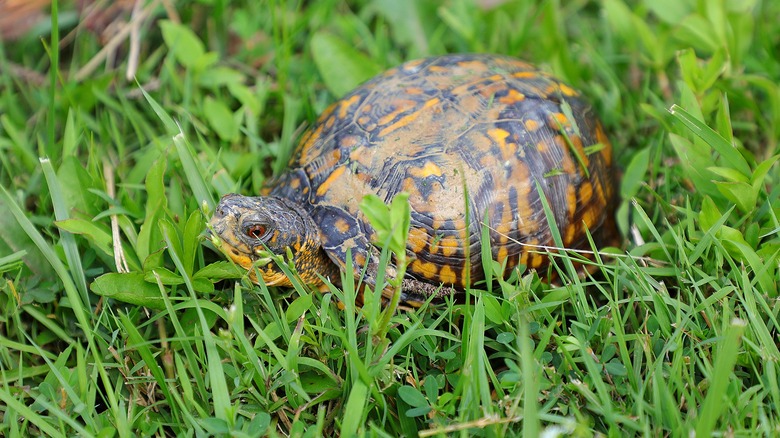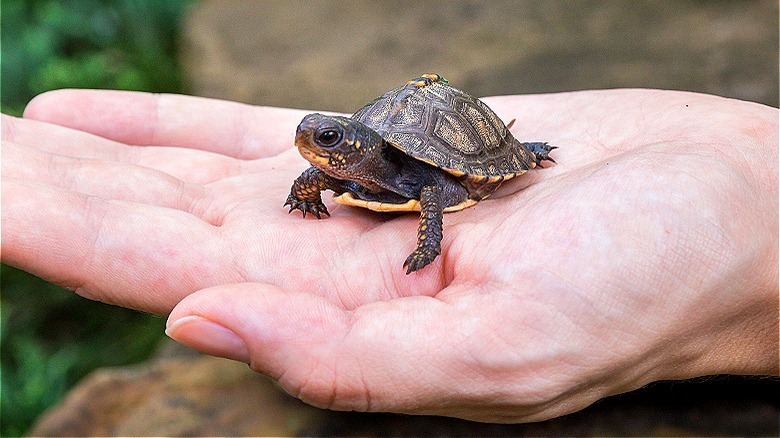What You Need To Know To Mow A Turtle-Friendly Lawn
Box turtles can find their way onto your property, finding a home in your garden and a hiding place under that backyard brush pile you created to attract and support wildlife. If it's possible a turtle is living in your backyard, take a few minutes to consider your mowing routine before you accidentally collide with your new, smallest neighbor. The best time to mow your lawn is in the middle of a dry day, when backyard turtles have found some shade. By modifying your mowing routine to accommodate a turtle's morning and evening routines, you will give them a better chance to thrive.
Turtles move around during the day and they rest at night, but they don't care to out when the sun is at its hottest. This means they are most active in the early mornings and evenings when the temperature isn't as warm. They're also active when it rains because they love to search for grubs and worms, as well as a cool place to rest in the wet grass and mud. Females begin nesting in April and baby turtles will hatch a few months later, so the summer months are when they're most likely to be active in your backyard.
Begin mowing in the middle of the lawn
Before you begin mowing, take a few minutes to walk around your yard and look for turtles who have taken refuge in the grass. Set your mower blades at 4 inches high or more, which will keep your yard looking neat but still provide turtles with enough grass to hide in when you are finished. As you mow the lawn, begin by going down the center of the yard. If they're hiding nearby, this step will give them a warning to move outside the perimeter of the mowing area where it's safe. Move slowly as you mow, because so do they.
Turtles prefer to hide under leaves or heavy brush, so if you wondered if you should be leaving grass clippings on your lawn, the answer is, "Yes." Clippings will both attract turtles and make them feel safe. Turtles have an innate sense of where their home environment is, and it can include an area of land that spans several acres. They'll stay in this territory their entire lives, which can last up to 50 years.
In fact, if they're moved too far away from where their home is, they'll spend their energy trying to find their way back. If a turtle has designated your backyard as a safe haven, then consider it a compliment. By following these steps to mow your lawn in a turtle-friendly way, you'll provide them with the best chance to live out their long lives in your backyard retreat.

